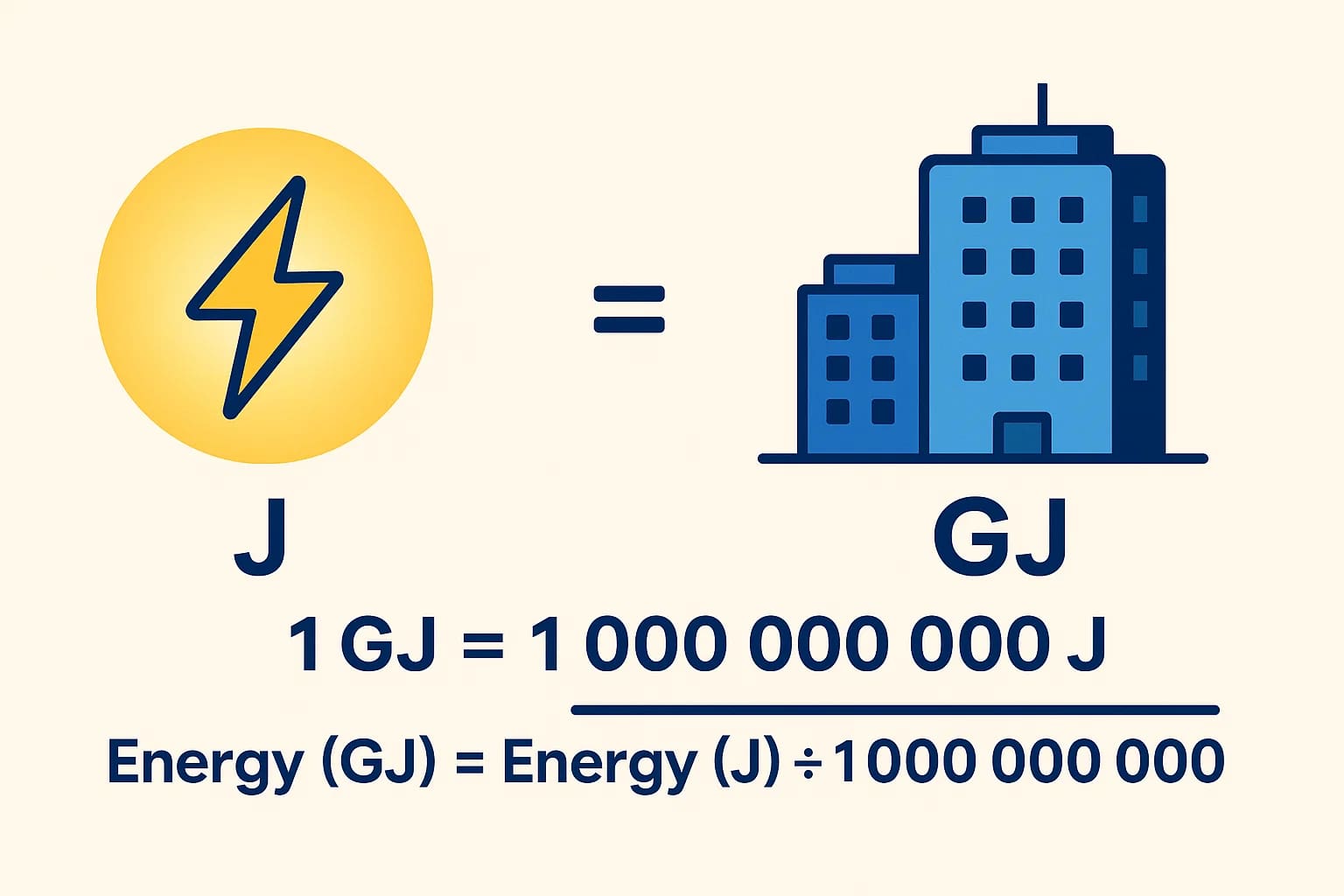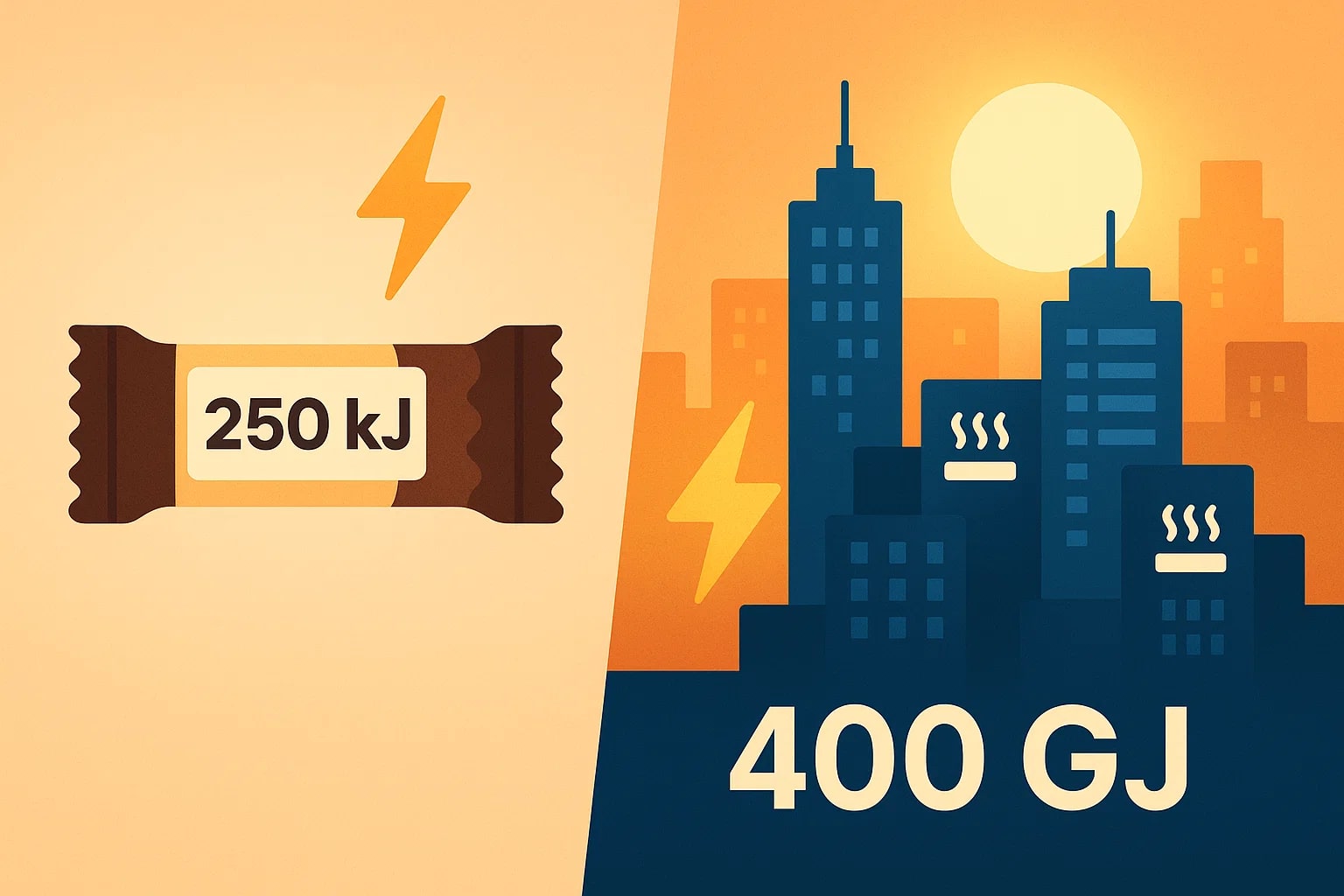Joule to Gigajoule – How to convert J to GJ
Switching from joules to gigajoules isn’t just about big numbers — it’s about clarity. Joules are perfect for small-scale physics and day-to-day energy data, while gigajoules simplify industrial reporting and large-scale energy tracking. Let’s explore where these units fit, how to convert between them, and why scientists, auditors, and engineers use both.

Joules: the building block of energy
The joule (J) is the SI base unit of energy. It represents the work done when a force of 1 N moves an object over 1 m, or the energy transferred by 1 W of power in 1 s. Joules turn up in everything from lab reports to nutrition labels — the “energy” you see on food packaging is listed in kilojoules, which are 1 000 J.
While a joule itself is small, it’s a universal measuring stick. Lighting a small LED for a second uses just a few joules, and lifting a 100 g object by one meter uses roughly 1 J of work.
Gigajoules: taming enormous figures
A gigajoule (GJ) equals one billion joules:
1 GJ = 1 000 000 000 J.
It’s the preferred scale for energy utilities, large facilities, and fuel accounting. Natural gas consumption, for example, is billed in GJ because households and businesses easily use billions of joules each month. One GJ equals roughly 277.8 kW·h, about ten days of typical household electricity use.
Without gigajoules, most energy reports would be bogged down by long, unwieldy numbers.
Converting between J and GJ
These units differ by a power of a billion, so the math is straightforward:
1 GJ = 1 000 000 000 J
Energy (GJ) = Energy (J) ÷ 1 000 000 000
Worked example:
A wind turbine produces 18 000 000 000 J in a single hour. Converting that to gigajoules:
18 000 000 000 J ÷ 1 000 000 000 = 18 GJ.
The turbine’s hourly output is 18 GJ.
For fast calculations, check Conversion tools or jump to the dedicated Energy Converter.
Did you know?
-
James Prescott Joule’s experiments in the 1840s showed that mechanical work and heat were interchangeable, giving rise to the joule as a standard unit.
-
Roughly 26 L of gasoline contains about 1 GJ of chemical energy, which is why gigajoules often appear in energy trade and pricing.
-
Canadian natural gas utilities charge customers in GJ to reflect usable energy instead of just cubic meters of gas delivered.
-
A typical lightning strike unleashes around 5 GJ — enough to run a standard household for close to two months.
-
The Hornsdale Power Reserve in Australia, one of the largest lithium-ion battery installations in the world, can store more than 193 500 GJ of energy.
From a single spark to powering a city
Joules and gigajoules serve different scales but describe the same physical concept. A nutrition label might show 250 kJ for a protein bar — a convenient way to express 250 000 J without writing five zeros.
Meanwhile, a mid-sized commercial building can consume 400 GJ of heating energy over a winter. Writing that as 400 000 000 000 J would be impractical, making gigajoules essential for large energy datasets.
The ability to move seamlessly between these units keeps everything — from consumer information to industrial audits — clear and consistent.

Keeping energy data readable
Energy figures can stretch from fractions of a joule in precision electronics to hundreds of gigajoules in district heating systems. Converting joules to gigajoules isn’t just a mathematical step; it ensures values are easy to interpret and compare.
Whether you’re analyzing data from a research experiment, drafting a building energy report, or tracking production output, Jetcalculator’s Conversion tools and Energy Converter can deliver accurate results instantly.
From powering a single LED to fueling a manufacturing plant, the right unit keeps your energy calculations meaningful.

